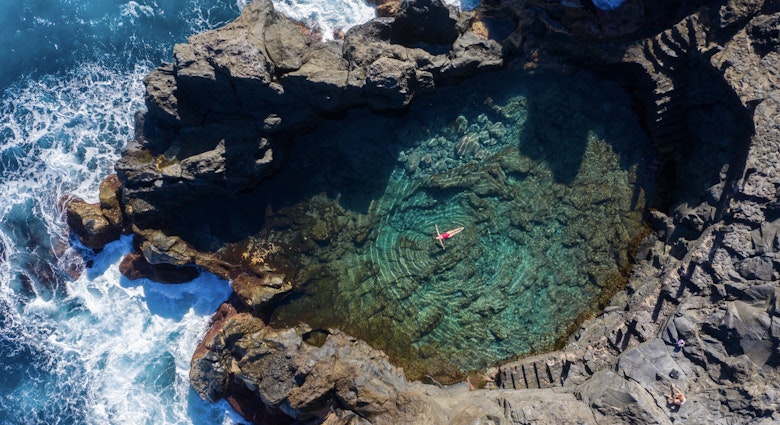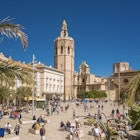
Nov 19, 2024 • 4 min read

Jun 7, 2023 • 4 min read

Sculpture of the Archangel Michael defeating a demon by artist Luisa Roldán on display in the Royal Collections Gallery © Patrimonio Nacional
A brand new museum filled with treasures from Spain's state-owned royal collection is set to open in Madrid at the end of this month.
Taking center stage on any itinerary of the city alongside the Prado, the Thyssen-Bornemisza, and the Reina Sofía, the Galería de las Colecciones Reales will give visitors a glimpse into the lavish lifestyle afforded by Spain's monarchy with a collection of 650 works that includes not just paintings by Velázquez, Goya, Caravaggio, Titian and El Greco, but also tapestries, furniture, and even a section of Madrid's original medieval wall built during the time of Al-Andalus.

2023 is a great time to visit Spain for art. Not only are you getting in on the Picasso anniversary celebrations, you can also visit one of Europe's most important museum openings in recent years.
Sitting just across from the Royal Palace, the Galería de las Colecciones Reales's modern building drops down three floors to the Campo de Moro gardens giving it spectacular views across the river to the Casa de Campo park.
The director of the museum, Leticia Ruiz, explained why the award-winning building is so special: "As soon as the viewer enters the rooms, they are confronted with perspectives and views that change with the light and at sunset lends the hallway and other spaces a beautiful intimate light that projects geometric shadows."
The lighting is not the only dynamic thing about the museum. Drawing on a vast reserve of artworks, the display will change over time.
"It is going to be a very different museum to the museums we are used to, at least in Spain. It will have an extremely fluid format that will change along the way for the public, who will discover a variety of items and displays," said Ruiz.

What really puts this museum in the big leagues is that it draws from the vast Patrimonio Nacional collection: treasures from Spain's impossibly wealthy Hapsburg and Bourbon dynasties that fell into public hands during the short-lived Second Republic.
"There are masterpieces from all the significant arts spanning almost five centuries of history, including some pieces of furniture of exceptional beauty and technical quality, as well as pieces of embroidery from one of the best embroiderers of the first half of the 18th century," said Ruiz.
While the director said it was difficult to select a single favorite, she did admit to a fondness for a Velázquez painting. "The white horse without a rider generates an element of mystery and gives us a different vision of the equestrian portraits of the great Spanish painter."
The Velázquez is part of the Hapsburg collection on floor -1, which also includes Caravaggio's Salome receives the Head of John the Baptist, as well as works by Jusepe de Ribera (known as José de Ribera in Spain), Titian and El Greco.

On the same floor, in an adjacent room, are the remains of Madrid's original city walls. Álvaro Soler, archaeologist and chief curator of the Royal Armor,y explained the significance of this last display: "The room is designed as a large showcase, a large window through which people can see something very important, which is essential for understanding the city of Madrid, essential for understanding why the Royal Palace is here."
Soler is referring to the city's walls, which were constructed in the ninth century during the reign of Muhammad I of Córdoba and later hidden from view. The discovery of this section of fortified wall, which includes part of a defensive tower and a reconstructed gate, was so important that the opening of the museum was delayed when the remains were discovered.
Further down on Floor -2, visitors can find out about the Royal Palace, which was built over the charred remains of Madrid's original Moorish fortress, and enjoy works by Goya, displayed alongside tapestries, musical instruments and furniture.

The museum is slated to open on June 28. Sitting across from the Royal Palace behind the Cathedral of the Almudena, the building can be entered from the Plaza de la Armeria or further beneath from Cuesta de la Vega. It will be open between 10am to 8pm from Monday to Saturday and 10am to 7pm on Sundays and holidays.
Entrance will be free for the first few days and will cost €14 or €24 when combined with entrance to the Royal Palace. EU citizens, Latin American citizens or residents in Spain can enter for free Monday to Thursday between 6pm to 8pm.


Nov 19, 2024 • 4 min read

Nov 6, 2024 • 7 min read






